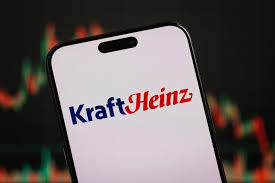
Kraft Heinz is plotting a dramatic bid to breathe new life into its portfolio of once‑household brands by unwinding the very merger that created it. Faced with languishing sales and mounting pressure from private‑label competitors, the food giant is exploring a carve‑up of its assets—reviving nostalgia‑driven labels while severing the cost‑cutting tie that bound Kraft and Heinz together in 2015. This strategic turnaround could reshape not only the company’s future but also offer a playbook for other corporates grappling with the fallout of ill‑fated unions.
Reviving Legacy Labels to Boost Growth
For Kraft Heinz, the siren call of vintage brands is hard to ignore. Velveeta, Kraft Singles and Oscar Mayer once ruled supermarket aisles, but in recent years these stalwarts have lost momentum as value‑seeking consumers trade down to private‑label cheddar and discount hot dogs. Executives now believe that a fresh, standalone identity—repositioned around heritage and quality—could reignite interest among lapsed buyers and attract new ones drawn to the authenticity of “classic” products.
Insiders say the company is considering spinning off its slower‑growing grocery division, which encompasses familiar names such as Lunchables and Philadelphia cream cheese, into a separate public company. That move would allow management teams to focus squarely on reviving these brands, investing in targeted marketing campaigns, packaging redesigns and limited‑edition flavors that capitalize on consumer nostalgia. At the same time, the remaining condiments and sauces unit—anchored by Heinz ketchup and its robust North American presence—would be free to pursue international growth and premium positioning without being weighed down by legacy grocery lines.
Behind this push is a recognition that scale alone no longer guarantees success in packed supermarket aisles. By freeing individual businesses to chart their own course, Kraft Heinz hopes to unlock value that has been hidden by the blind pursuit of cost savings since its largely financier‑driven merger. In doing so, the company is tapping into a broader industry trend: investors and consumers alike are rewarding companies that demonstrate clear strategic focus, authentic brand stories and agility in meeting evolving tastes.
Strategic Breakup Plan to Unravel the 2015 Merger
Undoing a mega‑merger is no small feat. Kraft and Heinz joined forces in a \$45 billion deal led by investment heavyweights, with the promise of slashing overhead and driving efficiencies across shared supply chains. Yet, while cost‑cutting delivered initial earnings boosts, it ultimately masked deeper issues: stagnant innovation, overreliance on mature markets and an increasingly complex brand portfolio.
To reverse course, Kraft Heinz is weighing a spinoff that would carve out roughly half of its roughly 200‑brand roster. The execution would involve establishing an independent board, reallocating balance‑sheet resources and legally dividing manufacturing facilities and distribution networks. Analysts suggest the grocery spinoff could command a valuation north of \$20 billion, given the strength of certain labels in niche channels and the potential for more focused investment. Meanwhile, the condiments business—whose ketchup and mayonnaise enjoy higher margins—could fetch multiples more akin to pure‑play sauce companies.
Critically, the split is designed to preserve shareholder value: investors would receive shares in both entities, enabling them to back either the nostalgic grocery arm or the growth‑oriented condiments division according to their risk appetite. Management teams would gain autonomy, shedding the burden of servicing unrelated brands and allowing for faster decision‑making, tailored R\&D budgets and bespoke go‑to‑market strategies. In effect, the breakup represents a bet that smaller, nimbler companies will outperform a monolithic conglomerate struggling to prioritize between mature and emerging product lines.
Lessons from Past Corporate Unwindings
Kraft Heinz is not charting entirely new territory. In recent years, several major corporations have hit the reset button on complex mergers, with mixed results that offer valuable lessons.
These precedents stress two key imperatives for Kraft Heinz: first, the carve‑up must be underpinned by rigorous financial modeling and operational separation plans to minimize disruption; second, strong leadership teams must be in place to steer each new company through its next growth phase. Without these elements, the risk is that the breakup merely shifts costs and complexity rather than creating distinct value streams.
Implications for Shareholders and Consumers
If executed cleanly, the Kraft Heinz breakup could deliver a trifecta of benefits: renewed brand relevance, clearer growth pathways and improved investor returns. Shareholders would gain optionality, choosing between the defensive, brand‑heavy grocery arm and the dynamic, international condiment business. Consumers, in turn, could see reinvigorated product lines—limited‑time offerings, premium innovations and refreshed packaging that speak to both tradition and modern tastes.
Yet the stakes are high. Any misstep—regulatory delays, integration hiccups or lackluster post‑spin performance—could erode confidence and replicate the very stagnation the company now seeks to escape. With Kraft Heinz’s share price still languishing well below its pre‑merger highs, management knows time is of the essence. A successful carve‑up would validate the notion that sometimes the best way to move forward is to revisit, and revise, the decisions of the past.
As Kraft Heinz charts this ambitious path, the industry will be watching closely. A well‑executed undoing of the 2015 merger could serve as a beacon for other conglomerates wrestling with unwieldy brand portfolios. Conversely, a misfire could reinforce the cautionary tale that not all corporate marriages can—or should—be reversed. Either way, the next chapter in Kraft Heinz’s storied history is poised to redefine what it means to merge, split and ultimately thrive in the ever‑evolving food landscape.
(Source:www.investing.com)
Reviving Legacy Labels to Boost Growth
For Kraft Heinz, the siren call of vintage brands is hard to ignore. Velveeta, Kraft Singles and Oscar Mayer once ruled supermarket aisles, but in recent years these stalwarts have lost momentum as value‑seeking consumers trade down to private‑label cheddar and discount hot dogs. Executives now believe that a fresh, standalone identity—repositioned around heritage and quality—could reignite interest among lapsed buyers and attract new ones drawn to the authenticity of “classic” products.
Insiders say the company is considering spinning off its slower‑growing grocery division, which encompasses familiar names such as Lunchables and Philadelphia cream cheese, into a separate public company. That move would allow management teams to focus squarely on reviving these brands, investing in targeted marketing campaigns, packaging redesigns and limited‑edition flavors that capitalize on consumer nostalgia. At the same time, the remaining condiments and sauces unit—anchored by Heinz ketchup and its robust North American presence—would be free to pursue international growth and premium positioning without being weighed down by legacy grocery lines.
Behind this push is a recognition that scale alone no longer guarantees success in packed supermarket aisles. By freeing individual businesses to chart their own course, Kraft Heinz hopes to unlock value that has been hidden by the blind pursuit of cost savings since its largely financier‑driven merger. In doing so, the company is tapping into a broader industry trend: investors and consumers alike are rewarding companies that demonstrate clear strategic focus, authentic brand stories and agility in meeting evolving tastes.
Strategic Breakup Plan to Unravel the 2015 Merger
Undoing a mega‑merger is no small feat. Kraft and Heinz joined forces in a \$45 billion deal led by investment heavyweights, with the promise of slashing overhead and driving efficiencies across shared supply chains. Yet, while cost‑cutting delivered initial earnings boosts, it ultimately masked deeper issues: stagnant innovation, overreliance on mature markets and an increasingly complex brand portfolio.
To reverse course, Kraft Heinz is weighing a spinoff that would carve out roughly half of its roughly 200‑brand roster. The execution would involve establishing an independent board, reallocating balance‑sheet resources and legally dividing manufacturing facilities and distribution networks. Analysts suggest the grocery spinoff could command a valuation north of \$20 billion, given the strength of certain labels in niche channels and the potential for more focused investment. Meanwhile, the condiments business—whose ketchup and mayonnaise enjoy higher margins—could fetch multiples more akin to pure‑play sauce companies.
Critically, the split is designed to preserve shareholder value: investors would receive shares in both entities, enabling them to back either the nostalgic grocery arm or the growth‑oriented condiments division according to their risk appetite. Management teams would gain autonomy, shedding the burden of servicing unrelated brands and allowing for faster decision‑making, tailored R\&D budgets and bespoke go‑to‑market strategies. In effect, the breakup represents a bet that smaller, nimbler companies will outperform a monolithic conglomerate struggling to prioritize between mature and emerging product lines.
Lessons from Past Corporate Unwindings
Kraft Heinz is not charting entirely new territory. In recent years, several major corporations have hit the reset button on complex mergers, with mixed results that offer valuable lessons.
- DowDuPont Split (2019): After merging in 2017 to form an agricultural and materials titan, Dow and DuPont began a planned separation into three pure‑play companies—Dow Inc., DuPont de Nemours and Corteva Agriscience. The unwind allowed each business to pursue tailored investment, and all three saw their stock valuations rebound as clarity on strategic priorities emerged. However, execution delays and integration costs trimmed some benefits, underscoring the need for meticulous planning on legal structures and tax implications.
- eBay and PayPal (2015): Once sister companies, PayPal’s soaring growth outpaced eBay’s core marketplace, prompting a split that gave PayPal the freedom to partner broadly across e‑commerce platforms. Post‑separation, PayPal accelerated its expansion into mobile payments and digital wallets, while eBay refocused on marketplace improvements. Both companies delivered significant shareholder returns, illustrating how carving off high‑growth divisions can unlock latent value.
- HP Inc. and Hewlett Packard Enterprise (2015):Seeking to separate its legacy PC business from enterprise IT services, Hewlett‑Packard executed a split that created HP Inc. and HPE. While HPE struggled initially with debt and slower‑than‑expected turnaround, HP Inc. capitalized on a PC renaissance during the pandemic to drive revenues. The contrasting trajectories highlight that market timing and post‑split management execution are critical to success.
These precedents stress two key imperatives for Kraft Heinz: first, the carve‑up must be underpinned by rigorous financial modeling and operational separation plans to minimize disruption; second, strong leadership teams must be in place to steer each new company through its next growth phase. Without these elements, the risk is that the breakup merely shifts costs and complexity rather than creating distinct value streams.
Implications for Shareholders and Consumers
If executed cleanly, the Kraft Heinz breakup could deliver a trifecta of benefits: renewed brand relevance, clearer growth pathways and improved investor returns. Shareholders would gain optionality, choosing between the defensive, brand‑heavy grocery arm and the dynamic, international condiment business. Consumers, in turn, could see reinvigorated product lines—limited‑time offerings, premium innovations and refreshed packaging that speak to both tradition and modern tastes.
Yet the stakes are high. Any misstep—regulatory delays, integration hiccups or lackluster post‑spin performance—could erode confidence and replicate the very stagnation the company now seeks to escape. With Kraft Heinz’s share price still languishing well below its pre‑merger highs, management knows time is of the essence. A successful carve‑up would validate the notion that sometimes the best way to move forward is to revisit, and revise, the decisions of the past.
As Kraft Heinz charts this ambitious path, the industry will be watching closely. A well‑executed undoing of the 2015 merger could serve as a beacon for other conglomerates wrestling with unwieldy brand portfolios. Conversely, a misfire could reinforce the cautionary tale that not all corporate marriages can—or should—be reversed. Either way, the next chapter in Kraft Heinz’s storied history is poised to redefine what it means to merge, split and ultimately thrive in the ever‑evolving food landscape.
(Source:www.investing.com)














